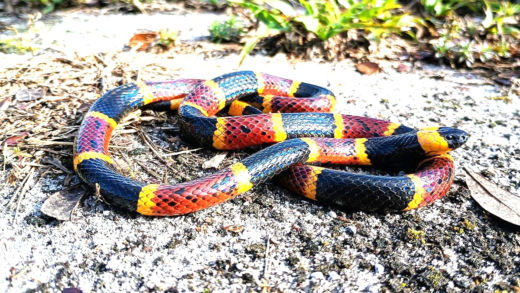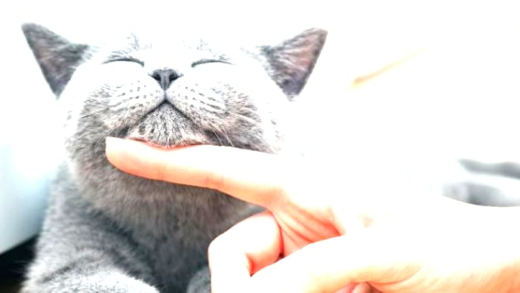Porbeagle sharks are classified as vulnerable, facing threats from overfishing and habitat loss. Conservation efforts include catch limits and marine protected areas. Fun facts reveal their speed and unique adaptations, while their role as apex predators is crucial for marine ecosystems. Protecting porbeagle sharks is essential for ocean health.
Porbeagle Shark Appearance: What Makes Them Unique?
The porbeagle shark is a striking species known for its distinctive features. This shark has a robust body, typically reaching lengths of up to 2.5 meters (8.2 feet). Its coloration is another notable aspect; the dorsal side is a deep blue or gray, while the underside is a lighter shade, creating a stark contrast that aids in camouflage. The porbeagle’s characteristic conical snout and long, pointed pectoral fins contribute to its streamlined appearance, making it an adept swimmer.
One of the most fascinating traits of the porbeagle shark is its ability to maintain a body temperature higher than the surrounding water. This adaptation allows it to thrive in colder waters, enhancing its hunting prowess. Porbeagles are also equipped with a unique set of teeth: the upper jaw has broad, triangular teeth, while the lower jaw features sharper, more pointed ones, ideal for gripping slippery prey.
How Porbeagle Sharks Hunt: Techniques and Strategies
When it comes to hunting, porbeagle sharks are quite skilled. They primarily hunt in the early morning or late afternoon, exploiting their heightened visibility and the behavior of their prey. These sharks use a combination of speed and stealth, often employing a strategy called “ambush predation.” This involves lurking in the depths and then swiftly darting towards unsuspecting fish.
Their diet mainly consists of:
- Fish (like mackerel and herring)
- Cephalopods (such as squid)
- Crustaceans
Porbeagles are known for their impressive leaping ability, which they sometimes use to catch prey or evade threats. This hunting technique not only showcases their agility but also helps them maintain control over their territory.
Porbeagle vs Great White Shark: Key Similarities and Differences
The comparison between porbeagle sharks and great white sharks reveals several similarities and differences. Both species are apex predators, playing crucial roles in their ecosystems. However, their sizes and behaviors differ significantly.
- Size: Great white sharks can exceed 6 meters (20 feet), whereas porbeagles are much smaller, averaging around 2.5 meters.
- Habitat: Porbeagles prefer cooler waters and are often found in the North Atlantic, while great whites inhabit a broader range of temperatures.
- Diet: Both sharks are carnivorous, but great whites tend to target larger prey, including seals.
Understanding these differences helps in appreciating the unique adaptations of each species within their respective environments.
The Origin of the Name ‘Porbeagle’: Why a Dog?
The name porbeagle is believed to have originated from the Middle English term “porebeagle,” referring to a type of dog, specifically a small hunting dog. This connection stems from the shark’s agile hunting style, reminiscent of how dogs chase their prey. The term highlights the shark’s swift and predatory nature.
Interestingly, the name reflects not only the shark’s behavior but also its role in the marine ecosystem, akin to a hunting dog in the animal kingdom. Understanding this etymology enriches our perspective on the porbeagle shark’s identity and its significance in marine biology.
Preferred Habitat of Porbeagle Sharks: Where Do They Live?
The porbeagle shark thrives in cooler waters, primarily in the North Atlantic Ocean. They prefer the continental shelf regions where the water temperature ranges between 10°C to 16°C (50°F to 61°F). These sharks are often spotted near the surface, but they can dive deeper to hunt for prey.
Common locations include:
- Coastal waters of the northeastern United States
- Parts of Canada, especially around Nova Scotia
- European waters, particularly the British Isles
Porbeagles are known to migrate seasonally, following the movement of their prey. This behavior is crucial for their survival, allowing them to exploit rich feeding grounds. Their preference for cooler waters also contributes to their unique physiological adaptations.
Are Porbeagle Sharks Dangerous to Humans?
Generally, porbeagle sharks are not considered dangerous to humans. They are relatively small compared to other shark species and are known to be timid. Most interactions with humans are harmless, as porbeagles tend to avoid contact.
However, like any wild animal, they can react defensively if provoked. There have been very few recorded attacks, and those incidents often occur when the shark is startled or feels threatened. It’s essential to respect their habitat and observe them from a safe distance.
In conclusion, while porbeagle sharks are capable predators, they pose minimal risk to humans, making them an intriguing species to study rather than fear.
Diet of Porbeagle Sharks: What Do They Eat?
The porbeagle shark has a diverse diet primarily consisting of:
- Fish, including mackerel, herring, and cod
- Cephalopods, such as squid and octopus
- Crustaceans, which supplement their diet
These sharks are active hunters, employing various strategies to catch their prey. They utilize their speed and agility, often ambushing fish from below. Their unique set of teeth allows them to grip slippery prey effectively.
Understanding their diet is crucial for conservation efforts, as it provides insight into their role in the marine ecosystem. Healthy porbeagle populations indicate a balanced environment, which is vital for the overall health of oceanic ecosystems.
Reproduction of Porbeagle Sharks: How Do They Breed?
Porbeagle sharks are ovoviviparous, meaning that the young develop inside eggs that remain within the mother’s body until they hatch. This method of reproduction allows for a higher survival rate among the young. A typical litter can consist of 2 to 5 pups, which are born fully developed.
The breeding season generally occurs in late summer to early fall. After a gestation period of about 9 months, pups are born in the spring. Female porbeagles tend to return to specific breeding areas, which helps in the continuity of their populations.
Understanding their reproductive habits is vital for conservation initiatives, as protecting breeding grounds ensures the future of this remarkable species.
Conservation Status of Porbeagle Sharks: Are They at Risk?
The porbeagle shark is currently classified as vulnerable by the International Union for Conservation of Nature (IUCN). This status highlights the risks they face due to overfishing and habitat loss. Their populations have been declining, particularly in regions where fishing pressure is high. Several countries have implemented regulations to protect these sharks, including catch limits and seasonal fishing bans. However, enforcement of these regulations can be challenging.
Conservation efforts are crucial for the survival of porbeagle sharks. Initiatives such as marine protected areas (MPAs) can help safeguard their habitats and breeding grounds. Additionally, public awareness campaigns can educate communities about the importance of these sharks in marine ecosystems.
Fun Facts About Porbeagle Sharks: Did You Know?
Here are some fun and intriguing facts about porbeagle sharks that highlight their unique characteristics:
- Speedy Swimmers: Porbeagle sharks can swim at speeds of up to 40 km/h (25 mph), making them one of the fastest sharks in the ocean.
- Warm-Blooded: Unlike most sharks, porbeagles can maintain a body temperature higher than the surrounding water, which gives them an advantage in hunting.
- Unique Teeth: Their teeth are adapted for gripping slippery prey, with broad triangular teeth in the upper jaw and sharp, pointed teeth in the lower jaw.
- Seasonal Migrations: Porbeagles migrate seasonally to follow prey, demonstrating their adaptability to environmental changes.
- Limited Threat: They pose minimal danger to humans and are more likely to avoid contact than to engage.
The Role of Porbeagle Sharks in Marine Ecosystems
The porbeagle shark plays a vital role in marine ecosystems as an apex predator. Their presence helps maintain the balance of marine life by regulating fish populations. By preying on various species, including fish and cephalopods, porbeagle sharks contribute to the health of the ocean’s food web.
Moreover, they are indicators of ocean health. A thriving porbeagle population suggests a robust ecosystem, while their decline may signal environmental issues. Protecting these sharks is not only essential for their survival but also for the overall well-being of marine habitats.
Conclusion: Why We Should Care About Porbeagle Sharks
In summary, porbeagle sharks are remarkable creatures deserving of our attention and protection. Their unique adaptations, ecological significance, and current conservation challenges highlight the need for ongoing efforts to ensure their survival. By understanding and supporting conservation initiatives, we can help preserve the porbeagle shark and the vital role it plays in our oceans.





Comments are closed.